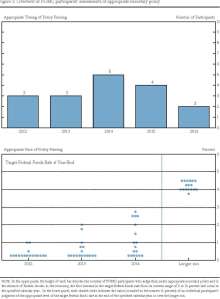Where Next for Interest Rates?
Fixed income managers have recently had to practice a rarely used skill; explaining poor investment performance to their clients. Bonds have been a great investment for a long time, but Fed Chairman Bernanke’s press conference last month has at least introduced two-way risk into the market. Quite possibly, he heralded the end of the secular bull market in bonds, a run that has lasted with few interruptions for over thirty years. Certainly the past few weeks have not been much fun for bond investors. If a generational low in U.S. interest rates really has taken place and bond yields are about to move irregularly higher, it will be a drawn out process. Bond managers will need to find variations on the theme that holding an asset that loses you money is a good idea because it’s uncorrelated with your other assets. After a few quarters it may become a rather tedious discussion.
By fortunate coincidence, my new book Bonds are Not Forever; The Crisis Facing Fixed Income Investors looks as if it will be coming out at a time when falling bond prices are on the minds of many investors. Few books currently advise on the dangers in bond investing. No doubt there will be more. The finished manuscript went in to publisher John Wiley this week. Reaching the goal line partially explains my relatively few recent blog postings.
The Eurodollar futures curve offers quite precise market forecasts of interest rates. You can compare them with the FOMC’s own forecasts on their website. The consensus among FOMC members is that they’ll begin raising short term rates in 2015. Eurodollar futures currently price in 53 bps between September 2015 and March 2016, or about two 25 bps tightenings over two quarters. Such a measured pace is probably a neutral forecast right now, which is to say that the futures market and the FOMC are in reasonable agreement on the near term path for short term rates. That’s about as close as you can get to saying bonds are fairly valued. They’re certainly not a good investment at current yields, but the market has largely removed the expectation of a more benign monetary regime than that forecast by the FOMC itself.



